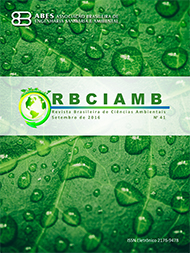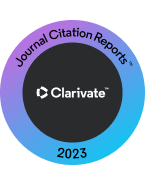MICROCYSTIN ACCUMULATION IN GOLDEN MUSSEL LIMNOPERNA FORTUNEI AND POTENCIAL RISKS TO THE AQUATIC BIOTA
DOI:
https://doi.org/10.5327/Z2176-947820160051Keywords:
bioaccumulation; cyanobaceria; phycotoxins; alien species; mollusc; eutrophication.Abstract
Cyanobacterias are natural components of the phytoplankton community, but they are often associated with eutrophic waters. Rivers in the state of São Paulo are in a continuous process of eutrophication, which favors the frequent cyanobacteria blooms in these environments, compromises the quality of the water for human consumption and promotes risks to the aquatic biota. The golden mussel (Limnoperna fortune) is an invasive alien species that can be a vector in the transfer of cyanobacterial toxins. The aim of this study was to evaluate the cyanobacteria blooms occurrence in São José dos Dourados River, their cyanotoxins and the possibility of phycotoxins bioaccumulating in the Limnoperna fortunei. Toxic cyanobacterias and cyanotoxins (microcystins) were detected in the samples. The results indicated that L. fortunei accumulated microcystins. The cyanobacterial blooms in the water of the studied river indicated a damage to the environment associated with eutrophication and risks of cyanotoxins presence to the aquatic biota.Downloads
Download data is not yet available.
Downloads
Published
2016-09-30
How to Cite
Minillo, A., Casali, M. P., Isique, W. D., Leite, M. A., & Rocha, O. (2016). MICROCYSTIN ACCUMULATION IN GOLDEN MUSSEL LIMNOPERNA FORTUNEI AND POTENCIAL RISKS TO THE AQUATIC BIOTA. Revista Brasileira De Ciências Ambientais, (41), 42–57. https://doi.org/10.5327/Z2176-947820160051
Issue
Section
Articles
License
Copyright (c) 2016 Revista Brasileira de Ciências Ambientais

This work is licensed under a Creative Commons Attribution 4.0 International License.


























